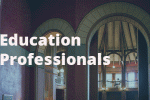It’s the FAFSA Week of Action (Apr 15-19). If you haven’t submitted your FAFSA, now is the time to take action. CLICK HERE for more information.
29 high schools make Governor Scott’s FAFSA challenge goal
Statewide goal set at 65 percent completion to maximize financial aid
WINOOSKI (May 23, 2018) – Twenty-nine high schools in Vermont have met Governor Phil Scott’s challenge of having 65 percent or more of their seniors file a FAFSA, the Free Application for Federal Student Aid.
Vermont Student Assistance Corp. holds the annual FAFSA Completion Challenge, open to all public and private high schools in the state, to make sure that all students who plan to continue their education, are considering it, or who should be continuing their studies, file the FAFSA.
The FAFSA unlocks the financial resources available to cover the costs of education and training after high school and is the first step in qualifying for the Pell grant, Vermont State Grant, institutional aid and scholarships administered by VSAC.
The 29 schools include Arlington Memorial High School; Bellows Falls Union High School; Bellows Free Academy-Fairfax; BFA-St. Albans; Blue Mountain Union High School; Burke Mountain Academy; Canaan School; Champlain Valley Union High School; Compass School; Essex High School; Hazen Union High School; Leland & Gray; Long Trail School; Middlebury Union High School; Milton Senior High School; Montpelier High School; Mount Mansfield Union High School; Northfield Middle/High School; Proctor Junior/Senior High School; Rice Memorial High School; Sharon Academy; South Burlington High School; South Royalton School; Stowe High School; Thetford Academy; Twinfield Union High School; Whitcomb Junior/Senior High School; Windsor High School and Woodstock Union High School.
“We know that too many students decide they can’t afford education or training after high school before they even find out how much aid they will receive,” said Scott Giles, VSAC president and CEO. “Filling out the FAFSA and Vermont State Grant application is the first step in discovering what the real costs of their education will be – not the sticker price.”
The FAFSA Completion Challenge runs from October 1 to May 1, when students must choose the school or training program they will attend after high school.
Vermonters will need to continue their education after high school if they are to be qualified for most careers in Vermont’s new economy. More than two-thirds of all jobs identified by the Vermont Department of Labor will require some credential of value after high school graduation. There are financial resources available to help Vermonters cover the costs of their education. It begins with the FAFSA.
In Vermont, 45 percent of students do not file FAFSA, according to NerdWallet.com. This means Vermonters lose out on an estimated $4.7 million in federal Pell grants every year, or about $3,600 per eligible student. Students who don’t file a FAFSA also may be missing out on the Vermont State Grant, which on average, offers an additional $1,800 to cover college costs for eligible students.
That’s free money that doesn’t need to be paid back.
About VSAC – Changing Lives through Education and Training since 1965
Vermont Student Assistance Corporation is a public, nonprofit agency established by the Vermont Legislature in 1965 to help Vermonters achieve their education and training goals after high school. VSAC serves students and their families in grades 7-12, as well as adults returning to school, by providing education and career planning services, need-based grants, scholarships and education loans. VSAC has awarded more than $600 million in grants and scholarships for Vermont students, and also administers Vermont’s 529 college savings plan. Share your VSAC story by email to myVSACstory@vsac.org or submit a video to YouTube. Find us at www.vsac.org or check in on Facebook and Twitter. #changing lives

